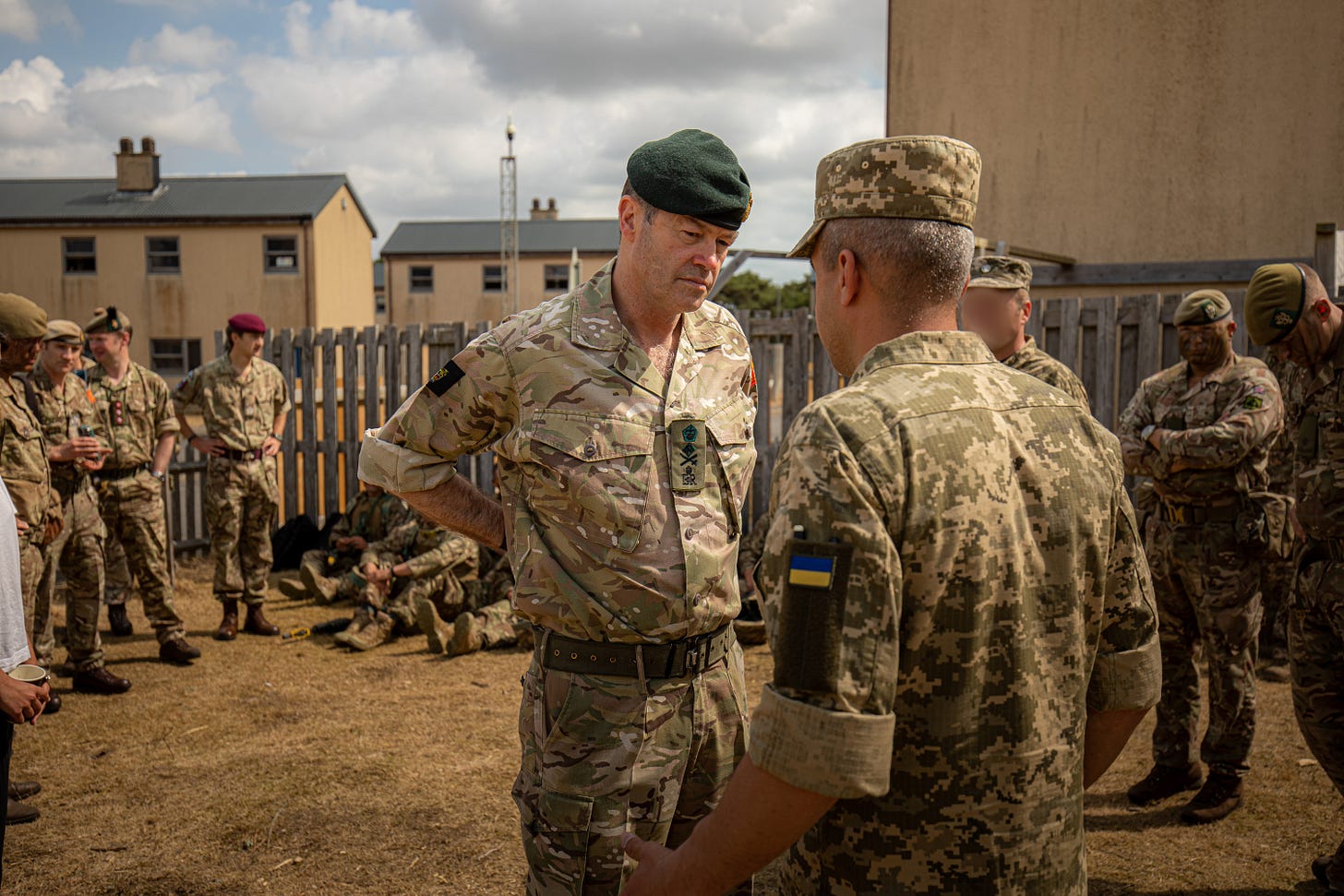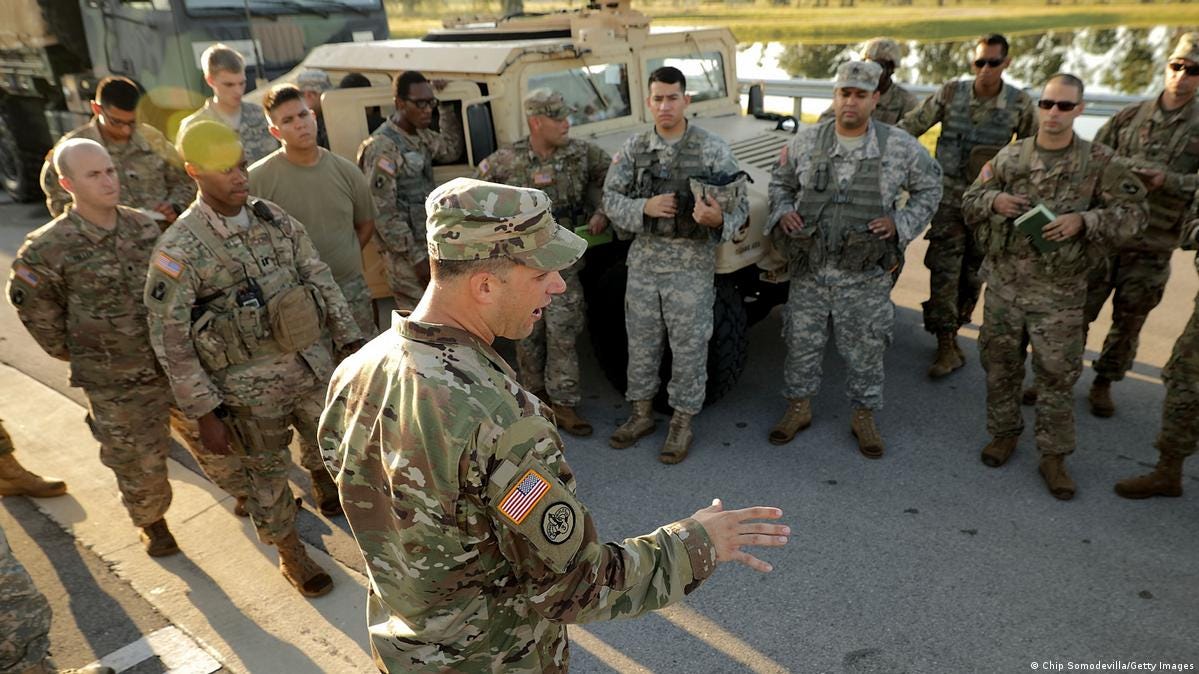Western Methods in Ukrainian Warfare
Challenges and Limitations of Western Training for the Ukrainian Armed Forces: The Trial and Error Approach

Discussions among Russian and Ukrainian armchair admirals have arisen regarding the extent and quality of the training provided by NATO instructors to Ukrainian soldiers. In an attempt to synthesize some of the main issues and potential consequences raised in these conversations, I have compiled a summary.
In October of 2022, the head of the European diplomacy, Josep Borrell, announced that by the end of March, more than 11,000 Ukrainian soldiers would be trained on the NATO ranges. Their number may exceed 30,000 by the end of 2023. The British have already trained 10,000 Ukrainian troops since June 2022; another 15,000 will be trained in other European countries.
The primary issue lies in applying the skills acquired during training to the real-world battlefield. The effectiveness of the training methods employed in NATO countries has been questioned by numerous AFU POWs, including those from highly regarded units such as the 45th and 95th Airborne Brigades. They have shared their skepticism regarding the training's superficial nature, which failed to provide them with a clear advantage in realistic combat scenarios.
How the training has failed

Western military instructors have had limited exposure to high-intensity conflicts since World War II, with most of their experience gained from local operations in Iraq, Syria, and Afghanistan. As a result, training methods are based on patterns from these conflicts rather than previous major wars.
Combat experience against irregular formations in the Middle East and Africa weakly applies to the Ukrainian battlefield realities. Infantry units are primarily trained in clearing houses and residential areas rather than conducting large-scale operations.
Trial and error approach
Another problem is the lack of live-firing experience using various weapons systems. For example, NLAW, Panzerfaust 3 ATGM, and Gepard anti-aircraft systems were never actually fired by the Ukrainian cadets during their training. The brief training timeframe does not permit the Ukrainian trainees to master a wide range of sophisticated new weapons fully. Additionally, NATO instructors lack the experience and knowledge to use these weapons in intense combat correctly. Currently, NATO is actively adopting expertise in this field for a new training program, but it will take years to implement it.
Looking at the condition of these NATO training facilities, one finds a shortage of equipment, weaponry, and other material resources to prepare Ukrainian trainees effectively. For instance, the NLAW and Javelin systems are only used for training using special simulators that imitate firing without using real ammunition. These training facilities have only enough simulators to teach the standard number of cadets. Currently, there is a critical shortage of such systems.
Ukrainian soldiers often receive limited live-fire training, shooting no more than two magazines (50-60 rounds) during their training sessions abroad and often relying on nearby units to provide necessary weapons. Despite the widespread announcement of a significant number of Ukrainian units trained to NATO standards, the reality of their training effectiveness is problematic. The Western approach of training the maximum number of soldiers in a short time only exacerbates these issues and cannot ensure high-quality training. The original five to seven weeks of training for the AFU infantry units have now been reduced to three weeks, while general military units are left with only two weeks of training.
By October-November 2023, around 30,000 Ukrainian troops trained to NATO standards will be in place. But having combat-ready units capable of shifting the war's course is a different story. Upon returning to the battlefield, Ukrainian soldiers and officers confront strikingly different conditions from the theoretical ones. The tactic of relying on the "human resource" packaged in a NATO wrapper, which comes at a significantly higher cost, to fill gaps in the frontline and gain more time remains unchanged. The Ukrainian military typically relies on bolstering under-trained units with small teams of highly trained special forces, a strategy aimed at minimizing losses rather than achieving victory.
The Ukrainian Armed Forces possess a range of weaponry, encompassing both Soviet and NATO systems. However, during training in the EU, the emphasis is only on specific Western weapons. This discrepancy becomes even more pronounced with mobilized soldiers who are provided with equipment or weapons available only at a particular range. For instance, they are taught to use NLAW in the UK or Milan ATGM in France. Consequently, upon their arrival at the front, they face a shortage of Western weapons or, in some cases, their complete unavailability. The psychological factor cannot be ignored either: no one trains Ukrainian formations for real combat situations, leaving soldiers and officers largely unprepared for the chaos of the first attack.
"Western-style" war in practice
Due to time constraints, Ukrainian military training is limited to the battalion level and sometimes as low as a platoon or squad level. Using multiple brigades in combat operations is intentionally avoided, as there is insufficient time to train many soldiers. While the Ukrainian command tries to apply NATO's operational and strategic models, this often leads to disjointed units that lack coordination and are susceptible to organizational chaos and losses. As a result, large-scale operations that require coordinating larger formations are often avoided.
The primary focus is conducting assault operations with light equipment and rapid breakthroughs, which proved successful in the Kharkiv region. However, the Russian military has adapted to this approach, rendering these attacks ineffective. Large-scale combat-reconnaissance units attempt attacks only once every few weeks, following extensive preparation and accumulation of vehicles and other equipment. This machinery is often unsuitable for combat and has limited effectiveness in difficult terrain.
The consequences
Due to the shortage of heavy equipment and the use of counter-terrorism tactics rather than military tactics, the Ukrainian army cannot fully utilize its army units for defense and offense. As a result, the claims made by Ukrainian Armed Forces officials regarding the preparation of three army corps are questionable, as there are no indications that their implementation tactics will change.
Training at least three brigades will take significant time, and it is unlikely to be completed by the end of 2023. Additionally, retraining Ukrainian infantry and tank crews to operate Bradley IFVs or Leopard 2 tanks will not address the overwhelming inability to adapt to combat conditions after training overseas.
The West is accelerating the training of Ukrainian troops even further to establish numerical superiority on the front lines. The Ukrainian Armed Forces are preparing more for defense than the much-hyped "Spring offensive," which would require better-trained troops. As such, cannon fodder may be necessary for combat operations in the spring and summer of 2023.






